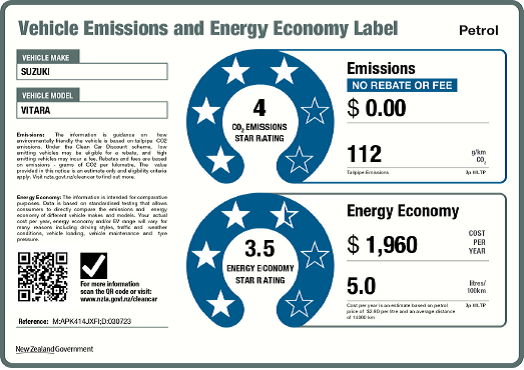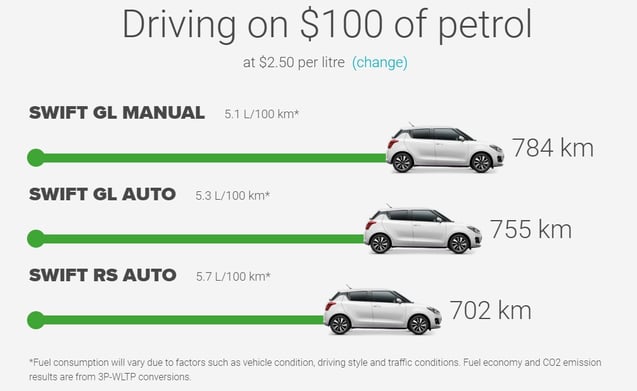
One of the main driving factors that influence customer purchasing decisions when buying a car is fuel economy. With the volatility of fuel pricing, people are more and more conscious of their petrol consumption.
This, in turn with a general ideological shift towards reducing their carbon foot-print through more efficient cars, has meant that customers are more and more willing to prioritise a car that takes them further for less.
Without further ado, here's all you need to know about fuel economy, the factors that influence the efficiency of your new car and how to choose the most fuel economical car on the lot.
What factors influence a car's petrol consumption?
Before purchasing a new vehicle, it's important to gain an understanding of how fuel economy actually works, and the different elements of any given car that affect how efficiently it runs. Fortunately, manufacturers have become more and more conscious of fuel consumption and C02 emissions, so these elements are ever-improving.
Here's a quick outline of the main factors to be aware of:
Car Weight
A fairly simple factor, if a car weighs more it's going to require more energy to move forward, and therefore more fuel injected. Typically smaller vehicles cost less to run, however there are other factors that contribute to a cars overall weight, including what materials have been used to construct the parts.
Engine Size
When we refer to engine size it is normally in terms of engine displacement. This is basically the measure of the cylinder volume displaced by all of the pistons of the engine and is a contributing factor to the power and torque that an engine produces, as well as how much fuel that engine consumes. Put simply, engine displacement is the volume of air that the engine consumes in a single revolution and is usually measured in litres.
The more air that needs to be pushed while the engine is in movement, the more energy the engine requires, and the more petrol is therefore burned. Which means smaller engines typically consume less fuel. Also, by being physically smaller they weigh less which in turn requires less power (and fuel) to be propelled.
Engine Technologies
There are engine designs that can also improve fuel efficiency and performance levels. Turbocharging utilises the energy of the exhaust gases to drive turbines and force-feed compressed air into the cylinders. So now when you’re cruising with low throttle you have the fuel efficiency benefits of a small engine and when you require more power for overtaking, the turbocharger provides instant acceleration of a larger engine. Suzuki refers to this technology as BoosterJet and these models also include direct injection which precisely controls the combustion process. Six-hole injector nozzles and a high-pressure pump quickly create the ideal air-fuel mixture inside the cylinder to maximise the fuel efficiency and performance of the engine.
Hybrid Models
By adding an electric motor to a conventional petrol or diesel engine you can improve the fuel efficiency of the vehicle. Hybrids use a combination of electricity stored in batteries and fuel stored in a fuel tank to generate the power to propel the vehicle.
There are variations of hybrid models to choose from. Some can self-charge their batteries when braking and decelerating or through the petrol engine, while some charge via a cable to the national power grid (known as a plug-in hybrid). In some cases the electric motor provides all the drive to the wheels and the petrol motor is purely there to charge the batteries when needed. However, it is more common for the wheels to be driven by a combination of petrol engine and electric drive to support.
With any technology there is a premium to pay up-front for the purchase of the vehicle but over time it will save you money directly at the pump.
Aerodynamic and Mechanical Efficiency (Reducing Drag)
Of course, the more resistance there is when a car moves in any given direction, the harder the engine has to work to propel the vehicle. Resistance can be created typically in two ways;
- The aerodynamic design. Curves and a well-designed body can reduce the air resistance of a car, or drag. When manufacturers create cars, they often consider the aerodynamic nature of the body to increase fuel economy.
- The mechanical efficiency. It's not just about the shape of the car, it's also about what's under the hood. All of the parts of a car in the drive train (transmission, wheel bearings, axles etc.) all contribute to the efficiency of a car. All of these different elements can be refined and tuned to minimise the amount of energy required to power the movement of each piece.
How is fuel economy measured in NZ?

Currently in New Zealand it is compulsory for all motor vehicle traders to display fuel economy labels on all vehicles (except for electric vehicles), provided a fuel economy label is available. Typically, a fuel label will quickly tell you:
- Vehicle make and model.
- Star rating - up to 6 stars for the most fuel efficient vehicles.
- Estimated cost per year to run the car – this comparative running cost is based on average fuel price and driving 14,000km per year.
- Fuel economy in litres per 100km - provided by the vehicle manufacturer who obtains the data from international rolling road cycle testing of the model.
- Average fuel price - used to calculate the cost per year for comparison purposes only.
At Suzuki New Zealand, all of our cars are listed with a helpful comparative chart like this one, to make your choice even easier.
Of course it's important to note that other factors such as fuel price at the time (which should be listed with the calculations), environment and the way that you drive will also affect the distance that can be travelled with $100 of petrol.
If you're looking to buy a car with excellent fuel efficiency, head to our website to check out the comparison tables, or alternatively, download our FREE Ultimate Car Buying Guide which covers all of the tips and tricks you'll need to find the perfect car for you.





